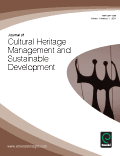
Journal of Cultural Heritage Management and Sustainable Development
Scope & Guideline
Exploring the nexus of heritage management and sustainable growth.
Introduction
Aims and Scopes
- Cultural Heritage Preservation:
The journal emphasizes the significance of preserving tangible and intangible cultural heritage, exploring various methodologies and frameworks for conservation that respect historical integrity while adapting to contemporary needs. - Sustainable Development Practices:
It examines the role of cultural heritage in achieving sustainable development goals (SDGs), promoting practices that integrate cultural, environmental, and economic dimensions. - Community Engagement and Participation:
The journal highlights the importance of involving local communities in heritage management, focusing on participatory approaches that recognize the value of local knowledge and practices. - Interdisciplinary Approaches:
Research published in the journal often employs interdisciplinary methodologies, integrating perspectives from fields such as sociology, anthropology, environmental science, and urban planning to address complex heritage management challenges. - Digital Technologies in Heritage Management:
The journal showcases innovative uses of digital technologies for documentation, preservation, and education in cultural heritage, reflecting the growing importance of digital tools in contemporary management practices.
Trending and Emerging
- Climate Change and Heritage Resilience:
Recent publications increasingly address the impact of climate change on cultural heritage, exploring strategies for enhancing resilience and integrating climate adaptation into heritage management practices. - Intangible Cultural Heritage:
There is a growing emphasis on intangible cultural heritage, reflecting an acknowledgment of its vital role in community identity and sustainability, as well as its potential for tourism and economic development. - Digital Heritage and Technology Integration:
The use of digital tools and technologies for heritage documentation, management, and public engagement is on the rise, showcasing innovative approaches to preserving cultural assets in the digital age. - Cultural Heritage as a Driver for Sustainable Tourism:
Research increasingly focuses on the role of cultural heritage in promoting sustainable tourism, examining how heritage sites can enhance visitor experiences while supporting local economies and communities. - Community-Led Heritage Initiatives:
There is a trend towards highlighting community-led initiatives in heritage management, emphasizing the importance of local involvement and ownership in conservation efforts.
Declining or Waning
- Traditional Architectural Styles:
There has been a noticeable decrease in publications focused solely on traditional architectural styles, as the journal shifts towards more integrative approaches that consider sustainability and adaptive reuse. - Historical Analysis without Contemporary Relevance:
Papers that solely explore historical contexts without linking them to contemporary issues or sustainable practices are becoming less frequent, indicating a move towards research that connects past and present. - Narrowly Defined Cultural Heritage:
Research that confines itself to specific cultural heritage topics without considering broader implications for sustainability and community engagement has seen a decline, as the journal promotes a more holistic view. - Local Case Studies with Limited Generalizability:
There is a reduction in case studies that do not offer insights or lessons applicable to wider contexts, as the journal encourages research that contributes to global discussions on cultural heritage management. - Purely Theoretical Frameworks:
Papers focused exclusively on theoretical frameworks without practical applications or case studies are less prevalent, reflecting a growing emphasis on actionable research.
Similar Journals

PRESERVATION
Advancing the Dialogue on Cultural IntegrityPRESERVATION is a distinguished journal published by the NATL TRUST HISTORIC PRESERVATION, focusing on critical issues in historic preservation and conservation within the realm of arts and humanities. With an ISSN of 1090-9931, this journal served as a notable platform for research and discourse from 2002 to 2018, although its coverage was discontinued in Scopus, where it held ranks that reflected its niche but valuable contributions to both visual arts and conservation. Despite its cessation, the journal remains a key resource for professionals and academics dedicated to preserving cultural heritage and advancing the study of preservation practices. The importance of PRESERVATION lies in its commitment to fostering an understanding of the challenges in maintaining historical integrity amidst modern developments. Researchers, practitioners, and students alike will find a wealth of knowledge and inspiration through its past issues, making it an essential reference point for those engaged in the ongoing dialogue around preservation methodologies and impacts.
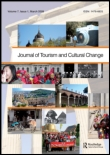
Journal of Tourism and Cultural Change
Innovating Research at the Crossroads of Tourism and SocietyThe Journal of Tourism and Cultural Change, published by Routledge Journals, Taylor & Francis Ltd, stands as a leading scholarly resource within the intersecting realms of tourism, cultural studies, and environmental science. With its ISSN 1476-6825 and E-ISSN 1747-7654, this journal reflects a remarkable legacy since its inception in 2003, maintaining a strong commitment to advancing interdisciplinary research through 2024. Currently ranking in the Q1 category for Cultural Studies and Geography, Planning and Development, and having a commendable Scopus ranking that places it in the top 97th percentile across various relevant categories, the journal is crucial for academics and practitioners alike seeking to explore and understand the dynamics of culture in the context of tourism. The Journal of Tourism and Cultural Change emphasizes high-quality research that informs policy and practice, making it indispensable for scholars, industry professionals, and students dedicated to these evolving fields. Although this journal does not currently offer Open Access options, its contributions are invaluable in fostering dialogue on sustainable tourism, cultural heritage, and the socio-economic implications of travel in our connecting world.

VOLKSKUNDE
Illuminating the Complexities of FolkloreVOLKSKUNDE is a distinguished academic journal dedicated to the study of folklore and cultural traditions, published by CENTRUM STUDIE DOCUMENTATIE based in Belgium. With an ISSN of 0042-8523, this journal serves as an essential platform for researchers, scholars, and students interested in the rich tapestry of cultural heritage and ethnographic research. Although currently not available as an open-access publication, VOLKSKUNDE is committed to disseminating high-quality scholarly articles that provide critical insights into the complexities of cultural practices across diverse societies. The journal’s objective is to foster academic discourse and stimulate inquiry into folklore studies, promoting a deeper understanding of cultural dynamics. By engaging with a broad range of topics within its scope, VOLKSKUNDE is an invaluable resource for anyone looking to deepen their knowledge in the field of folkloristics.
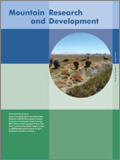
MOUNTAIN RESEARCH AND DEVELOPMENT
Connecting research and development in mountainous regions.MOUNTAIN RESEARCH AND DEVELOPMENT is a premier open-access journal dedicated to advancing the understanding of mountain environments and communities through rigorous research and interdisciplinary collaboration. Published by the International Mountain Society since 1981, this journal serves as a vital resource for researchers, professionals, and students in the fields of development, environmental science, and environmental chemistry. With a commendable impact factor reflected in its Q2 and Q3 quartile rankings in 2023 across various categories, it offers a platform for innovative studies that address the unique challenges facing mountainous regions globally. As a vital conduit for knowledge exchange, MOUNTAIN RESEARCH AND DEVELOPMENT fosters the dissemination of research findings, insights, and practical applications aimed at enhancing the sustainability and resilience of mountain ecosystems. Its open-access model, implemented since 2009, ensures that research is accessible to a broad audience, contributing to the ongoing dialogue in mountain studies and related fields. For detailed inquiries, the journal is hosted at the University of Bern, Switzerland.
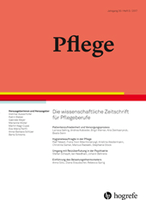
Pflege
Shaping the future of patient care with scholarly insights.Pflege, published by HOGREFE AG-HOGREFE AG SUISSE, is a prominent scholarly journal dedicated to the field of nursing and medicine. Since its inception in 1991, the journal has served as a key platform for disseminating research findings, reviews, and advancements in nursing practices, addressing the myriad challenges and innovations shaping healthcare today. With an ISSN of 1012-5302 and an E-ISSN of 1664-283X, Pflege is indexed in Scopus, where it ranks #87 out of 139 in General Nursing, reflecting its moderate impact within the academic community, with a Q3 classification in both medicine and nursing fields for 2023. Through rigorous peer reviews and a commitment to quality scholarship, the journal aims to foster interdisciplinary dialogue, enhancing both educational and clinical practices among healthcare professionals. Although it is not an open-access publication, Pflege continues to be an essential resource for researchers and practitioners seeking to advance their knowledge in the dynamic field of nursing and enhance patient care.

Documenti Geografici
Innovating Research for a Deeper Understanding of Socioeconomic TrendsDocumenti Geografici is a prestigious academic journal published by UNIV STUDI ROMA TOR VERGATA, FAC LETTERE & FILOSOFIA, specializing in interdisciplinary research bridging Economics, Geography, and History. Founded in 2019, this journal serves as a vital platform for scholars, researchers, and policymakers by disseminating innovative research findings and methodologies in the diverse fields encompassed within its scope. Currently categorized in the Q4 quartile for Economics, Econometrics and Finance (miscellaneous) and Geography, Planning and Development, and ranked in the Q3 quartile for History, Documenti Geografici offers insights that are valuable for advancing academic discourse. With its unique perspective and commitment to open dialogue, this journal is dedicated to fostering a deeper understanding of socioeconomic trends and spatial dynamics, making it an essential resource for those engaged in the humanities and social sciences. Manuscripts submitted to the journal benefit from a diligent peer-review process, ensuring high quality and relevance of published articles, thus contributing appreciably to the broader academic community.
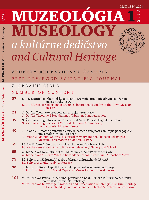
Muzeologia a Kulturne Dedicstvo-Museology and Cultural Heritage
Elevating research in museology and conservation.Muzeologia a Kulturne Dedicstvo-Museology and Cultural Heritage is a premier scholarly journal published by COMENIUS UNIVERSITY BRATISLAVA, focusing on the vital intersections of museology, cultural heritage, and conservation practices. Since its inception in 2013, this open-access journal has established itself as a leading platform for high-quality research, boasting impressive rankings in the 2023 Scopus metrics—#15 out of 83 in Museology and #28 out of 103 in Conservation. With a commitment to fostering an inclusive academic community, the journal welcomes innovative studies and critical discussions that address contemporary challenges in preserving cultural assets. Operating under an open-access model since 2017, Muzeologia a Kulturne Dedicstvo ensures wide dissemination of research findings, thereby enhancing visibility and accessibility for scholars, professionals, and students worldwide. As it continues to converge from 2013 to 2024, this journal not only serves as a vital resource but also as a catalyst for advances in the understanding and practice of museology and cultural heritage preservation.
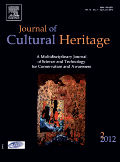
JOURNAL OF CULTURAL HERITAGE
Preserving the Past, Shaping the Future.JOURNAL OF CULTURAL HERITAGE, published by Elsevier France - Éditions Scientifiques Médicales Elsevier, is a pivotal academic journal dedicated to the multifaceted study of cultural heritage, including its conservation, anthropology, archaeology, and related fields. With an impressive standing in the academic community, this journal has achieved a Q1 ranking in Anthropology, Archaeology, Conservation, and History, reflecting its critical influence and contribution to these disciplines. The journal serves as a vital resource for researchers, professionals, and students interested in innovative research and developments concerning cultural heritage practices and policies. Although it operates under a subscription model, it provides access to innovative research and insights from the field, making it essential for those engaged in the preservation and study of cultural artifacts and historical narratives.

International Journal of Intangible Heritage
Innovating Strategies for Cultural Safeguarding.The International Journal of Intangible Heritage, published by the NATL FOLK MUSEUM KOREA-NFMK, stands as a premier platform dedicated to the exploration and preservation of intangible cultural heritage. With an ISSN of 1975-3586 and an E-ISSN of 1975-4019, this journal has successfully carved a niche in the fields of Conservation, Cultural Studies, and Museology, achieving Q1 categorization across these disciplines in 2023. It ranks impressively in Scopus, being #17/83 in Museology and #33/103 in Conservation, highlighting its significant contribution to the academic discourse in these fields. Published in South Korea, this journal not only serves as a vital resource for researchers and professionals but also engages students aspiring to enhance their understanding of intangible heritage. Accessible without an open access model, it features a blend of scholarly articles, reviews, and case studies from 2011 through 2024, making it a robust repository for current and emerging practices in the safeguarding of cultural expressions. By fostering innovative dialogue among scholars and practitioners globally, the International Journal of Intangible Heritage plays a crucial role in the ongoing dialogue surrounding the value and significance of intangible cultural assets.

Archeomatica-Tecnologie per i Beni Culturali
Exploring New Frontiers in Cultural Heritage Technologies.Archeomatica-Tecnologie per i Beni Culturali is a prestigious open-access journal dedicated to the field of cultural heritage technologies. Published by ARCHEOMATICA, this journal prides itself on disseminating high-quality research focused on innovative methodologies and technologies that enhance the preservation, conservation, and management of cultural assets. Since its inception in 2011, Archeomatica has fostered an inclusive platform for researchers, professionals, and students to share insights and advancements in the integration of science and technology within the cultural heritage sector. With a commitment to accessibility, all articles are freely available, promoting a collaborative academic environment. This journal is essential for those interested in bridging the gap between cultural heritage preservation and technological innovation, helping to ensure the longevity of our shared history.